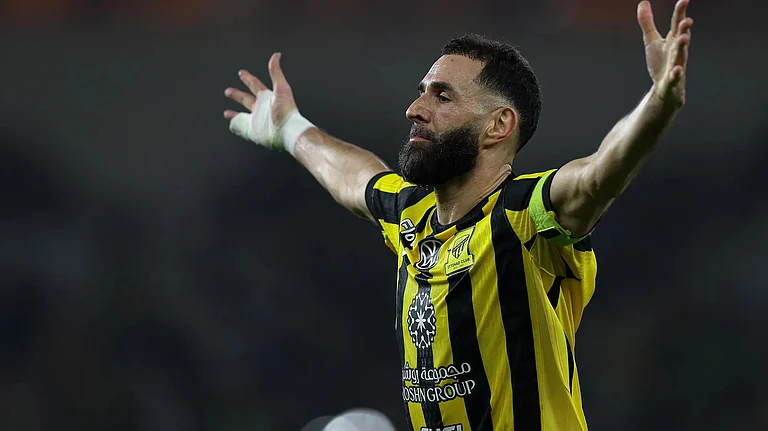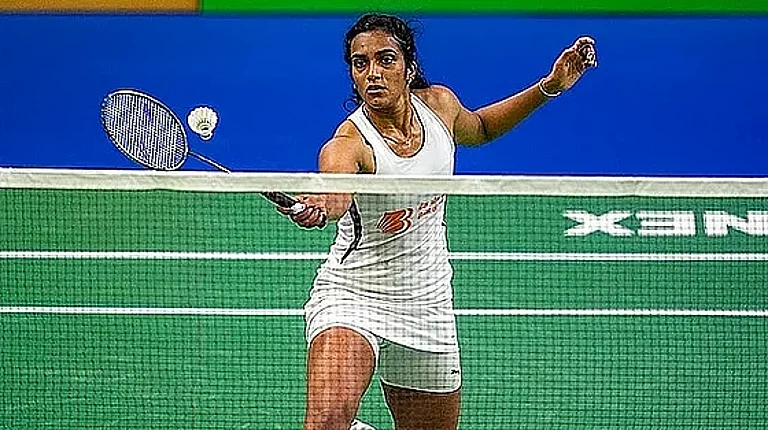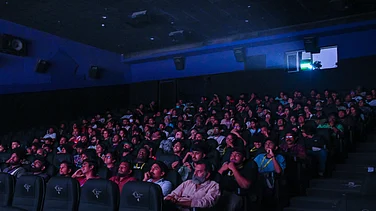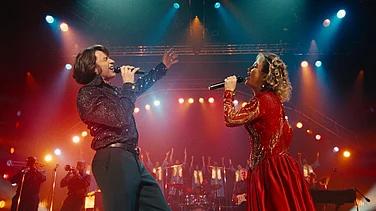***
Karan Johar

For me Indian cinema would be soulless without music. It's what sets us, and our films, apart. We sing at every festival, sing our prayers, we sing in the bathroom and even on death. We are not Indian if we are not musical. Just like Hong Kong films are identified with the martial arts, Indian mainstream cinema will always be about song-'n-dance.

I find Hum Aapke Hain Koun extremely interesting in how it adapted the modern Western musical format for popular Indian cinema. It's almost as though the scenes themselves are being sung. When one family approaches the other with a rishta, it's sung; all the conversations are sung. Dilwale Dulhania Le Jaayenge also showed a great sense of musical application. I felt the songs in my film Kuch Kuch Hota Hai worked well; they appeared at the right juncture, never deviated from the narrative. However, I find the numbers in Kabhi Khushi Kabhie Gham a little forced. But the one song from my films that will remain evergreen is the title track from Kal Ho Naa Ho. It's a great melody and a simple thought. It's a song of hope, about living for today. It's the favourite song of my entire career.


***
Subhash Ghai


Pakeezah, Mughal-e-Azam, Bobby, Dosti and Bombay—their songs speak about the story and the characters in varied situations. Be it joy or sorrow, they're spoken in equallypassionate notes in the songs. Of my own films, in Karz and Taal the whole narrative was built and sustained through the music. One was a murder mystery, the other a simple love story but the songs narrated both the stories equally well.


Call me pro-Pakistan, pro-Islam or whatever, but I am actively looking at Pakistan as a hunting ground to source my music these days. Whether it was Bheege honth tere... in Murder or Woh lamhe... in Zeher. There is an amazing talent there, a yearning, a thirst to sing and to reach out.
***
Rakesh Roshan

Song picturisation, the locales where they are shot, give a lot of value to a film; they provide immense relief. My film Kaamchor had some great songs—Tumse badhkar duniya mein na dekha koi aur zubaan pe aaj dil ki baat aa gayee.... Kaho Na Pyar Hai worked because the songs, the locales, the boy and the girl, everything about it was fresh. Beats might be trendy but my film songs will always be high on melody.

***
Farah Khan

Music was very effective in story-telling in Subhash Ghai's Karz, Karan Johar's Kuch Kuch Hota Hai and my own Main Hoon Na. Of all our filmmakers, Vijay Anand was a master of song picturisation. All the songs in his Jewel Thief, the windows song in Johnny Mera Naam, Pal bhar ke liye koi hamein pyar kar le..., were very innovatively shot.
His Guide is THE ultimate Indian musical. V. Shantaram in Jhanak Jhanak Payal Baje and Navrang was way ahead of his times in terms of choreography. Mani Ratnam was also very adventurous but only till a certain time, not any more. After Dil Se, he seems to have become embarrassed about doing songs, he doesn't seem to be going all out for them in the unabashed manner that he did earlier.
I was a choreographer first, so for me choreography will always be an integral part of filmmaking and of making a song popular. Dance director Suresh Bhatt did some very inventive pieces in Teesri Manzil. He could tell an entire story in a song. Prabhu Deva and Saroj Khan have done some awesome work. Nowadays, the songs are being shot in inane music video fashion with annoying jump cuts. I feel like telling the choreographers to go easy and to just let me wait, watch and enjoy the dance steps.
I have a great feel for music. As a filmmaker the best part about making a film is sitting in on the music. In Main Hoon Na, I knew exactly what I wanted to do. I wanted the R.D. Burman feel, wanted the music to be a tribute to the breezy musicals that Nasir Hussain made in the '60s and the '70s. I was inspired by the qawwali in Bombay Dreams. Not the classical qawwali but one with a retro feel, with orchestration—a rock-qawwali which could play in clubs. And Anu Malik came up with Tumse milke dil ka hai jo haal kya kahein.... And now Kajra re... has taken the qawwali to another mind-boggling level of popularity.
Every film has its own soul. There are niche, thoughtful films, which may not need songs but filmmakers might be forced to put them in to keep the distributors happy. Like there was no need for songs in Tigmanshu Dhulia's Haasil, Raj Kumar Santoshi's Khakee had terrible music. These films didn't require songs. Similarly, Rang De Basanti could have been made without music but the director was able to make a very fresh and intelligent use of songs. I love its soundtrack.
I may be able to make a songless film but don't want to. I look forward to songs in an Indian movie. A song that's well done is joyous. It keeps people on their seats, makes them come back to a film, again and again.
Shyam Benegal

Sound is becoming important even in mainstream commercial cinema, now much more than ever before. In Rang De Basanti Rakeysh Mehra used sound extremely well, music was as much part of the story-telling as the visual was. It was a very powerful score. In Karan Johar's Kal Ho Naa Ho one melody comes in so many different forms through the film. The film is brought back to you the moment you hear the tune. The one person who used songs in that fashion, not so much the thematic background score, was Guru Dutt. In Pyaasa, Kaagaz Ke Phool and Chaudhvin Ka Chand—if you listen to their songs the films come back to you.
But you have another phenomenon when the song itself becomes intrinsically enjoyable and has tremendous repeat value. Like Kajra Re, done in absolute hip hop style. It became such a huge hit, whether anyone saw the film or not. It has been one and half years since the film was released but the number of telephone rings with Kajra Re is phenomenal. Only two or three songs have jumped their time and gone well beyond 15 minutes of normal fame. Kajra Re is one, Kal Ho Naa Ho is another. Even if you listen to Kal Ho Naa Ho today you say, what a beautiful song. Even today when you hear Kajra Re you want to dance.






















